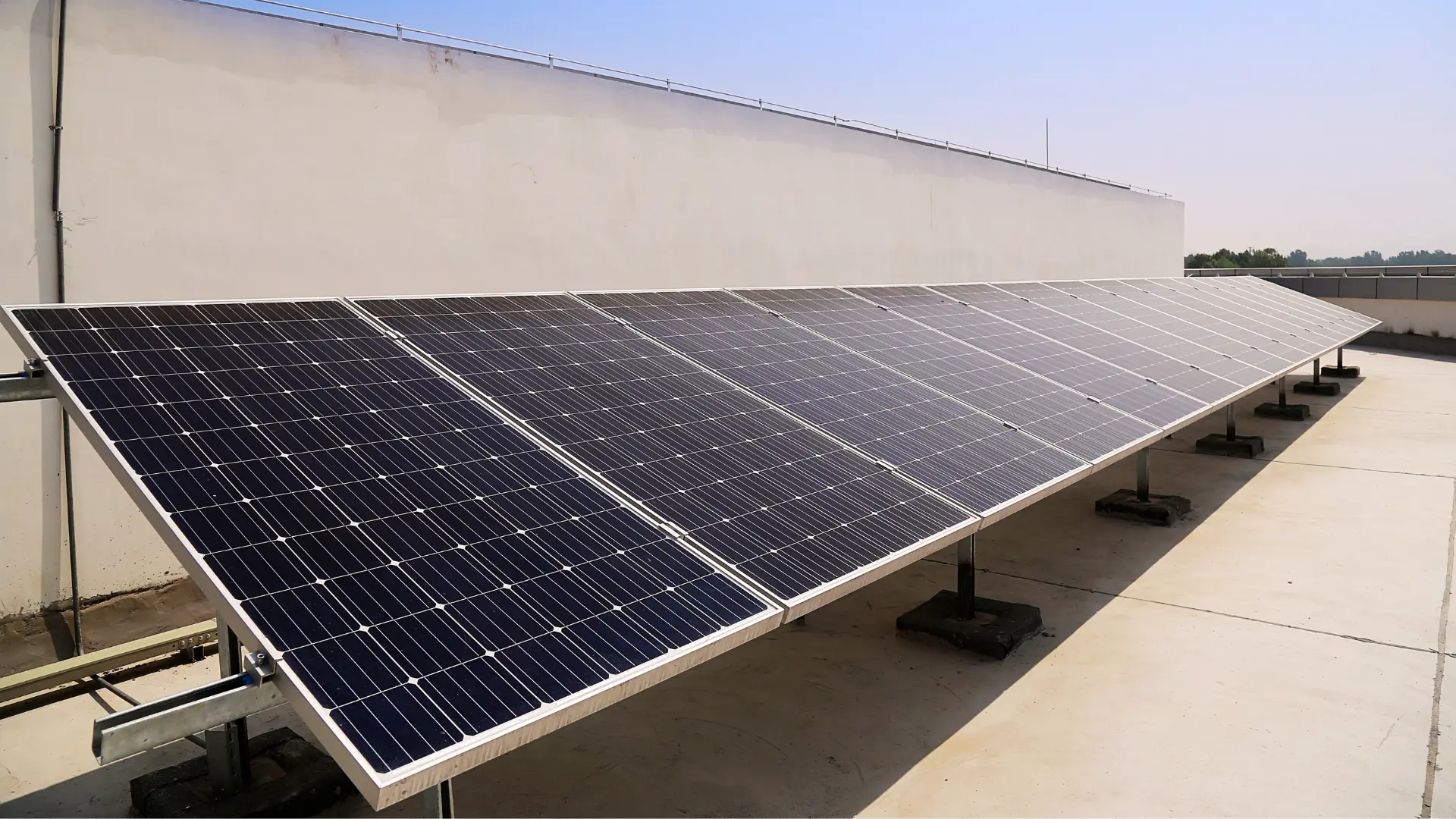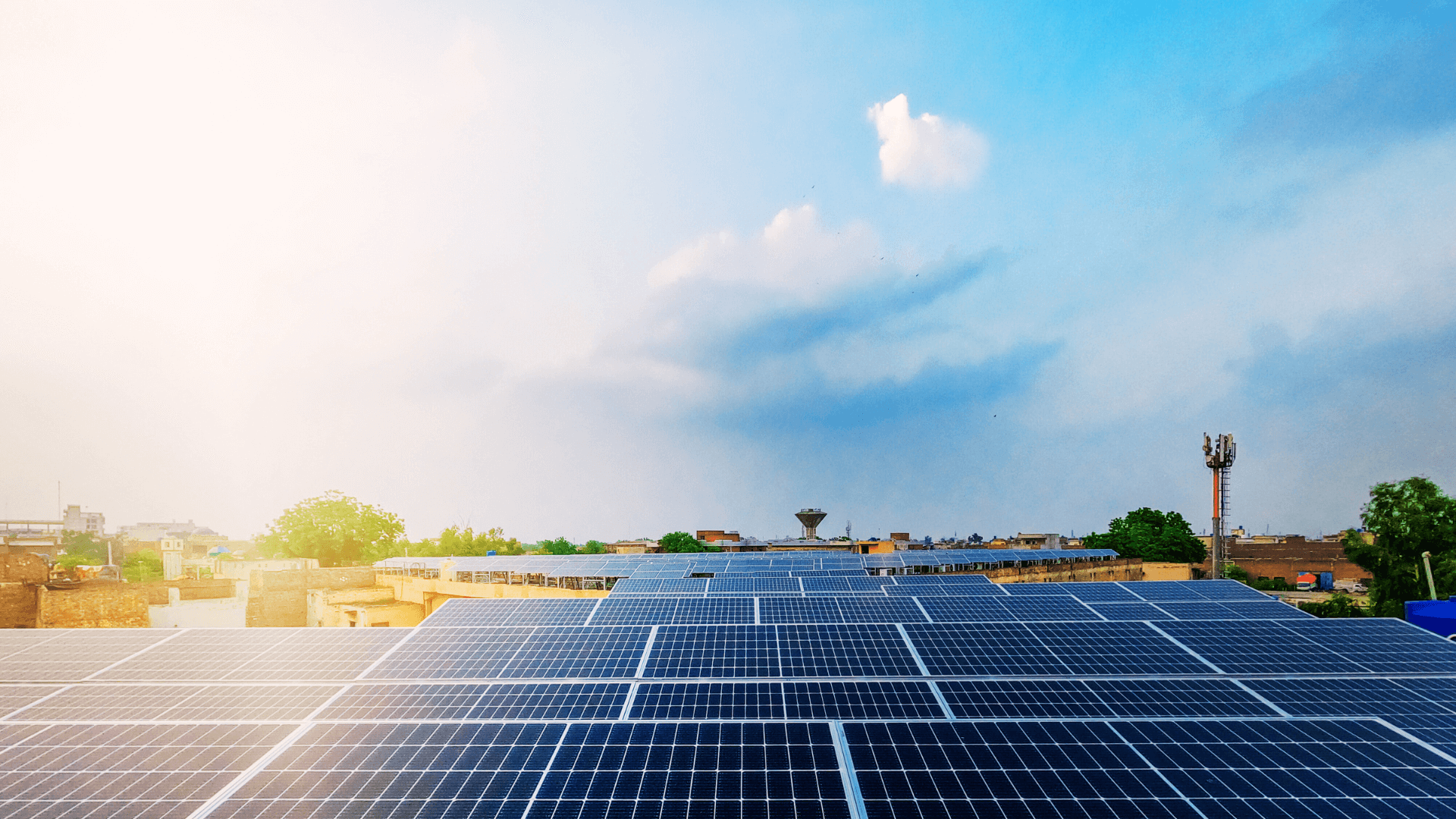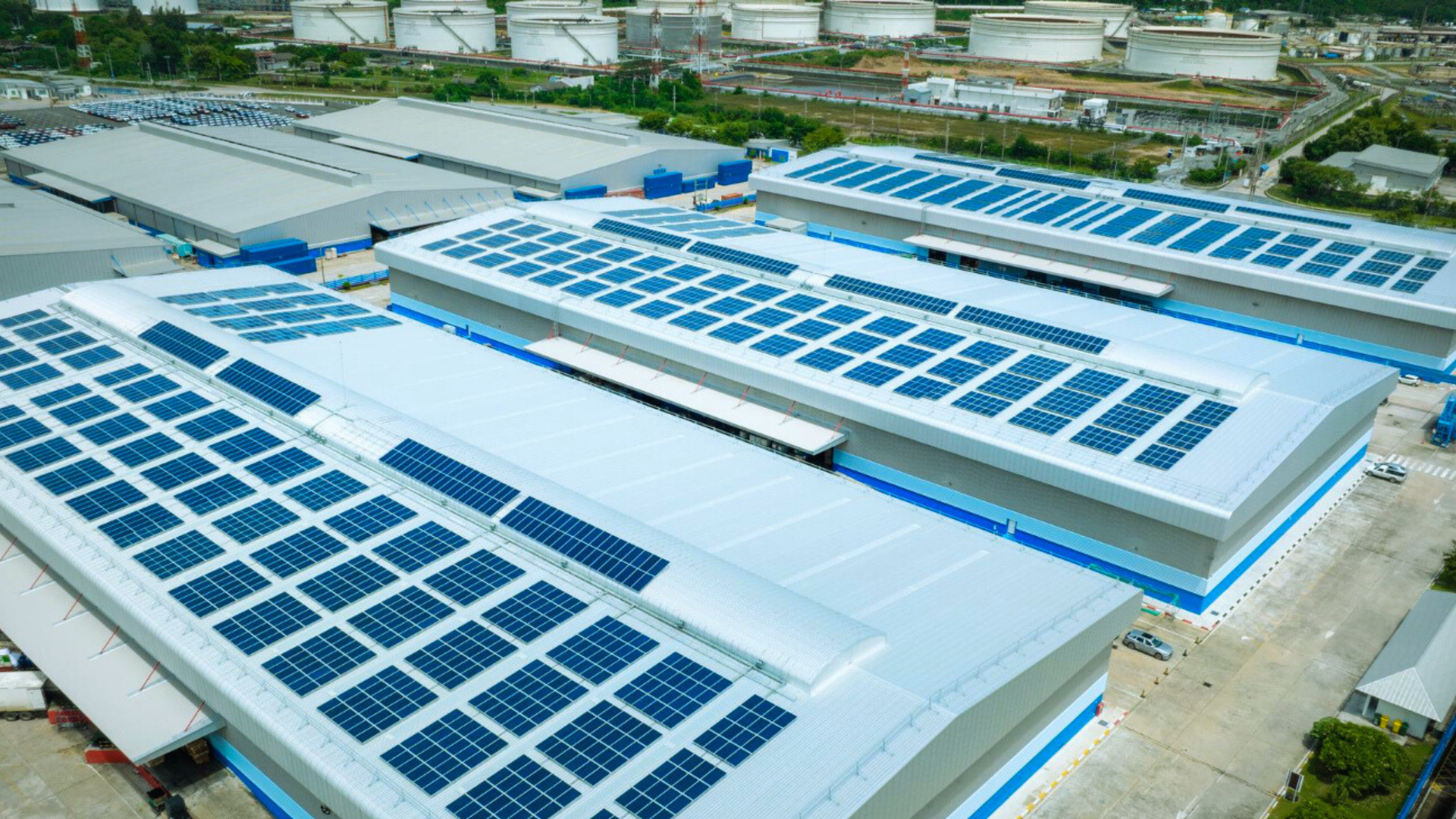Solar panels are an excellent investment in India, not just for homes but for businesses, too. Installing a solar power system is a major step towards sustainability, renewable energy, and savings, but just having the panels isn’t enough. To get the most out of your solar setup, be it on your rooftop or across an industrial facility, you need to ensure it’s working at its highest possible efficiency.
Whether you’re looking to reduce your electricity bills, generate surplus power, or simply do your bit for the planet, the performance of your solar panels matters. And with solar financing solutions like a solar installation loan now easily available in India, getting started is easier than ever.
But how do you make sure your solar investment is truly paying off?
What Is Solar Panel Efficiency?
Solar panel efficiency refers to how much sunlight your panel can convert into usable electricity. For example, if a panel has 20% efficiency, it means it converts 20% of the sunlight that hits it into electrical energy.
Now, this may sound straightforward, but in reality, several factors affect this number:
· The type of solar cells used matters: A monocrystalline panel typically offers higher efficiency than polycrystalline ones due to its purer silicon composition.
· The angle and tilt of your roof: If panels aren’t positioned to face the sun optimally, they won’t capture as much energy, especially in areas with seasonal sun movement. The optimal direction in most Indian cities would be south, and the angle corresponds to the latitude of the location. For example, in Maharashtra, Gujarat, and Madhya Pradesh, the angle should be between 18-24 degrees. In the five southern states, 12-18 degrees would be optimum. And as we move northwards from the centre, the angle will range between 24-36 degrees.
· Shade: Shade from nearby buildings, trees, or even accumulated dust can significantly block sunlight and reduce output.
· Temperature also plays a role: Ironically, while solar panels need sunlight, too much heat can reduce their efficiency.
· Age and maintenance are important: As panels get older or gather dirt and debris, their performance can decline unless cleaned and serviced regularly.
For example, two neighbouring buildings install the same rooftop solar system. One places their panels at the correct tilt, facing south, while the other has some shade from a tree blocking the panels in the afternoon. Over time, the first building sees significantly higher energy savings, all thanks to higher panel efficiency in real-world conditions.
That’s why maintaining solar panel efficiency is more than the tech specs; it’s about how you use and care for your system post-installation.
How Do We Maintain and Maximise Solar Panel Efficiency and Output?
Maximising solar panel output doesn’t mean spending on new hardware every few years. It’s about smart usage, regular upkeep, and making the right choices upfront.
1. Place the panels where the sun sees them the most
Location is everything for the efficiency of your solar energy production. In India, placing panels facing south ensures maximum sun exposure throughout the day. Also, avoid placing them in areas prone to frequent shade from trees, nearby buildings, or water tanks.
In some cases, businesses may benefit from ground-mounted panels where rooftops are unsuitable or limited. Use solar pathfinder tools or consult a solar installation expert to determine the best angle and placement for your region.
2. Invest wisely in trusted solar components
You don’t always need the most expensive panel, but choosing a reputable manufacturer and a trusted installer can make all the difference.
Invest in:
- Tier-1 solar panels with a proven performance track record
- Inverters with high conversion and maximum efficiency
- Sturdy mounting structures for your solar energy system, especially if you live in an area prone to heavy rain or wind
And don’t forget the warranty. A good solar panel should have at least a 25-year performance warranty, and the inverter should last 8-10 years.
3. Keep regular tabs on the solar panel system performance
Most modern solar power systems come with monitoring systems – either app-based or web dashboards – that help track how much energy is being generated daily. You can quickly detect drops in output and take corrective action by keeping an eye on performance trends.
For example, if your system usually generates 15 units per day and suddenly drops to 10, there could be an issue with an inverter, a loose connection, or even dirt buildup.
For commercial users or MSMEs, investing in remote performance monitoring helps avoid downtimes that can impact energy consumption and business operations.
4. Clean your solar panels and keep your system in top shape with routine checks
While solar panels require minimal maintenance, regular cleaning and check-ups can keep your solar panels working well.
- Hire professional solar panel cleaners every 2-4 weeks, depending on the dust levels in your region.
- Get professional servicing at least once a year to check wiring, inverters, and structural stability.
A little effort here prevents bigger problems later, especially in industrial or factory setups where even a day’s output loss can cost thousands.
5. Weatherproof your solar panels against the harsh and extreme Indian weather conditions
Solar panels are built to withstand harsh Indian weather conditions, from monsoons to peak summer. But it’s still wise to take some protective measures.
- Use sturdy mounts and clamps in cyclone-prone areas
- Ensure proper earthing and surge protection during the rainy season
- Trim overhanging branches that could fall or drop debris on the panels
If you’re taking a solar panel loan to fund a large project, protecting your investment is simply smart business.
6. Ensure that the solar panels don’t overheat
This is a less obvious one, but equally important. Excessive heat (especially when panels are placed too close to the roof surface without ventilation) increases the internal resistance of photovoltaic cells, reducing output and efficiency.
To reduce this risk and maximise your solar panel efficiency:
- Ensure 6-10 inches of space between the panel and roof for airflow
- Use light-coloured rooftops or reflective coatings in extremely hot zones
How to Choose the Right Solar Financing Option
Installing a solar power system is a one-time cost, but a significant one. That’s where solar financing options like loans and rooftop solar schemes come in.
Your ideal financing solution depends on:
- Project size and cost: Larger commercial systems may need long-term loans, while small homes may afford quicker repayments.
- Ownership preference: Want to own your system or lease it? Ownership gives long-term benefits, while leasing may suit short-term users.
- Government eligibility: Some subsidies and benefits apply only if you own the system and meet specific technical criteria.
- Cash flow and EMI comfort: Can your monthly income accommodate EMIs easily? Choose tenure and structure wisely.
- Property type: Residential, MSME, or industrial users may qualify for different terms under schemes like rooftop solar financing.
Electronica Finance Ltd. offers tailored solar installation loans that fit a wide range of needs for residences, micro-businesses, and large-scale commercial projects.
Invest Smart for Optimal Solar Panel Performance
Solar energy is a powerful asset, but only if you use it right. Efficient solar panel performance is about maintenance, placement, quality, and awareness.
And if you’re worried about upfront costs, smart financing can make clean energy affordable without breaking your budget.
Ready to power your business the smart way? Apply for a flexible solar panel loan via the EFL Click App today!
FAQs
Where can I find the most efficient solar panels?
The most efficient solar panels are usually those rated as Tier-1 by independent industry analysts. These panels are made by financially stable manufacturers with a proven track record of high-quality production. You can identify such panels by:
- Checking efficiency ratings: Panels with efficiency above 19% are generally considered high-performing.
- Reviewing certifications: Look for panels with BIS (Bureau of Indian Standards), IEC (International Electrotechnical Commission), or MNRE (Ministry of New and Renewable Energy) approvals, which ensure quality and safety compliance in India.
- Asking your installer: Request a performance datasheet and warranty terms — the best panels usually come with a 25-year performance warranty.
- Consulting solar financing providers: Companies offering solar loans or rooftop solar financing often work only with verified vendors who use Tier-1 equipment.
- Exploring solar comparison platforms: Several Indian websites and tools allow you to compare panel types based on specs, pricing, and efficiency, making it easier to find what suits your location and budget.
What affects the solar panel efficiency?
Factors like panel quality, angle of installation, dirt/dust, shade, temperature, and inverter performance affect solar panel efficiency.
Does solar panel efficiency decrease over time?
Yes, slightly. Most panels degrade by about 0.5% per year. After 25 years, you can expect around 85-90% of the original performance.
Can the location of a solar panel affect its efficiency?
Absolutely. Panels in north-facing or shaded locations can generate significantly less power. Always choose a sun-rich, south-facing spot.




